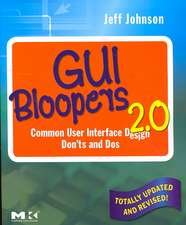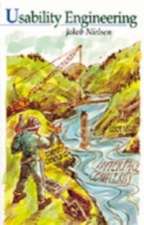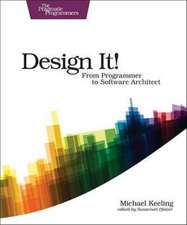The Usability Engineering Lifecycle: A Practitioner's Handbook for User Interface Design: Interactive Technologies
Autor Deborah J. Mayhewen Limba Engleză Paperback – 16 apr 1999
You'll learn to perform a complete requirements analysis and then incorporate the resulting goals and constraints in a highly structured, iterative design and development process. This process doesn't end with installation but instead begins anew with the collection of user feedback that will guide further development. Also covered are organizational issues related to the implementation of Usability Engineering, including cost justification, project planning, and organizational structures.
* Unites all current UE techniques in a single, authoritative resource, presenting a coherent lifecycle process in which each clearly defined task leads directly the next.
* Teaches concrete, immediately usable skills to practitioners in all kinds of product development organizations-from internal departments to commercial developers to consultants.
* Contains examples of actual software development projects and the ways in which they have benefited from Usability Engineering.
* Deals in specifics, not generalities-provides detailed templates and instructions for every phase of the Usability Engineering lifecycle.
* Pays special attention to Web site development and explains how Usability Engineering principles can be applied to the development of any interactive product.
Din seria Interactive Technologies
- 20%
 Preț: 310.79 lei
Preț: 310.79 lei - 34%
 Preț: 355.53 lei
Preț: 355.53 lei - 34%
 Preț: 244.47 lei
Preț: 244.47 lei - 20%
 Preț: 291.57 lei
Preț: 291.57 lei - 38%
 Preț: 348.00 lei
Preț: 348.00 lei - 31%
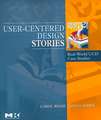 Preț: 306.16 lei
Preț: 306.16 lei - 20%
 Preț: 496.28 lei
Preț: 496.28 lei - 32%
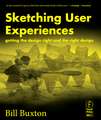 Preț: 229.80 lei
Preț: 229.80 lei - 32%
 Preț: 228.02 lei
Preț: 228.02 lei - 31%
 Preț: 275.36 lei
Preț: 275.36 lei - 31%
 Preț: 359.88 lei
Preț: 359.88 lei - 20%
 Preț: 594.99 lei
Preț: 594.99 lei - 20%
 Preț: 730.82 lei
Preț: 730.82 lei - 8%
 Preț: 227.94 lei
Preț: 227.94 lei - 21%
 Preț: 297.76 lei
Preț: 297.76 lei - 20%
 Preț: 410.91 lei
Preț: 410.91 lei - 27%
 Preț: 258.72 lei
Preț: 258.72 lei - 20%
 Preț: 346.23 lei
Preț: 346.23 lei - 28%
 Preț: 210.27 lei
Preț: 210.27 lei
Preț: 412.82 lei
Preț vechi: 567.74 lei
-27% Nou
Puncte Express: 619
Preț estimativ în valută:
79.00€ • 82.18$ • 65.22£
79.00€ • 82.18$ • 65.22£
Carte tipărită la comandă
Livrare economică 07-21 aprilie
Preluare comenzi: 021 569.72.76
Specificații
ISBN-13: 9781558605619
ISBN-10: 1558605614
Pagini: 560
Dimensiuni: 187 x 235 x 40 mm
Greutate: 1.09 kg
Editura: Elsevier
Seria Interactive Technologies
ISBN-10: 1558605614
Pagini: 560
Dimensiuni: 187 x 235 x 40 mm
Greutate: 1.09 kg
Editura: Elsevier
Seria Interactive Technologies
Public țintă
Software developers, user interface designers, usability engineers, and web designers and developers.Cuprins
Preface
Chapter 1: Introduction
REQUIREMENTS ANALYSIS
Chapter 2: User Profiles
Chapter 3: Contextual Task Analysis
Chapter 4: Usability Goal Setting
Chapter 5: Platform Capabilities and Constraints
Chapter 6: General Design Principles
DESIGN/TESTING/DEVELOPMENT
Design Level 1
Chapter 7: Work Reengineering
Chapter 8: Conceptual Model Design
Chapter 9: Conceptual Model Mockups
Chapter 10: Iterative Conceptual Model Evaluation
Design Level 2
Chapter 11: Screen Design Standards
Chapter 12: Screen Design Standards Prototyping
Chapter 13: Iterative Screen Design Standards Evaluation
Chapter 14: Style Guide Development
Design Level 3
Chapter 15: Detailed User Interface Design
Chapter 16: Iterative Detailed User Interface Design Evaluation
INSTALLATION
Chapter 17: User Feedback
ORGANIZATIONAL ISSUES
Chapter 18: Promoting and Implementing The Usability Engineering Lifecycle
Chapter 19: Usability Project Planning
Chapter 20: Cost-Justification
Chapter 21: Organizational Roles and Structures
Chapter 1: Introduction
REQUIREMENTS ANALYSIS
Chapter 2: User Profiles
Chapter 3: Contextual Task Analysis
Chapter 4: Usability Goal Setting
Chapter 5: Platform Capabilities and Constraints
Chapter 6: General Design Principles
DESIGN/TESTING/DEVELOPMENT
Design Level 1
Chapter 7: Work Reengineering
Chapter 8: Conceptual Model Design
Chapter 9: Conceptual Model Mockups
Chapter 10: Iterative Conceptual Model Evaluation
Design Level 2
Chapter 11: Screen Design Standards
Chapter 12: Screen Design Standards Prototyping
Chapter 13: Iterative Screen Design Standards Evaluation
Chapter 14: Style Guide Development
Design Level 3
Chapter 15: Detailed User Interface Design
Chapter 16: Iterative Detailed User Interface Design Evaluation
INSTALLATION
Chapter 17: User Feedback
ORGANIZATIONAL ISSUES
Chapter 18: Promoting and Implementing The Usability Engineering Lifecycle
Chapter 19: Usability Project Planning
Chapter 20: Cost-Justification
Chapter 21: Organizational Roles and Structures

